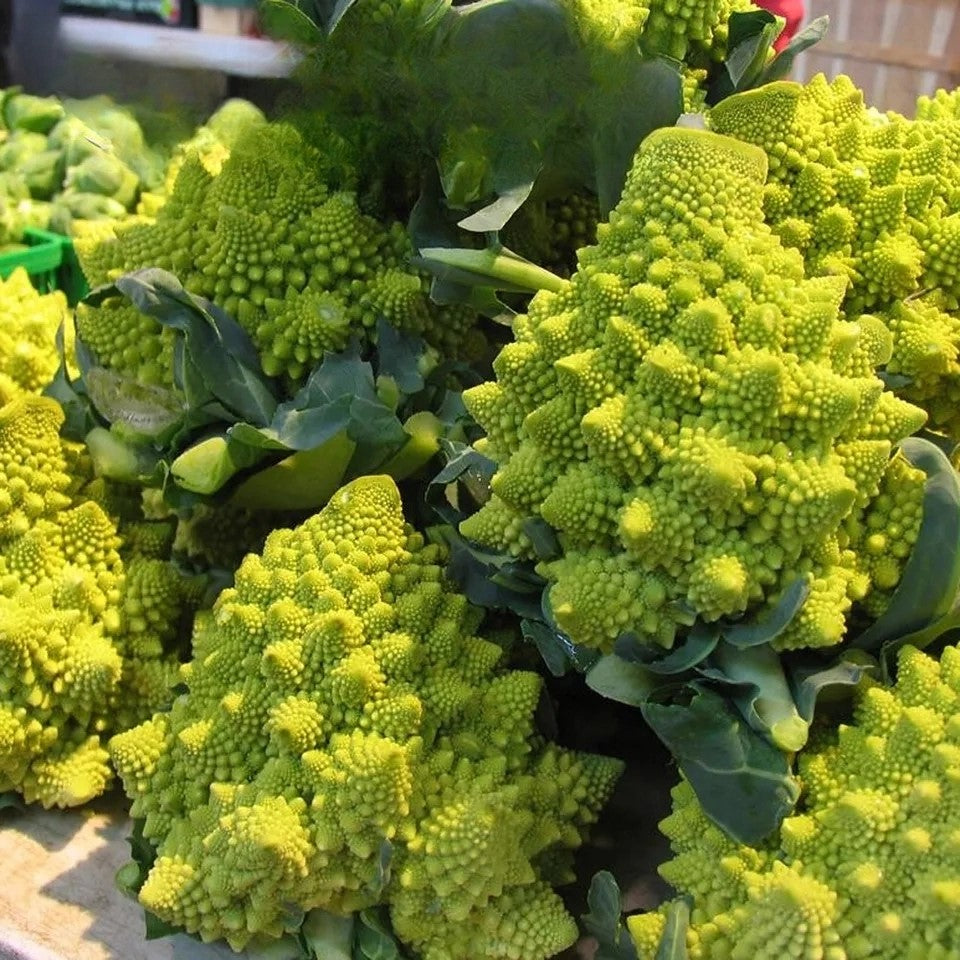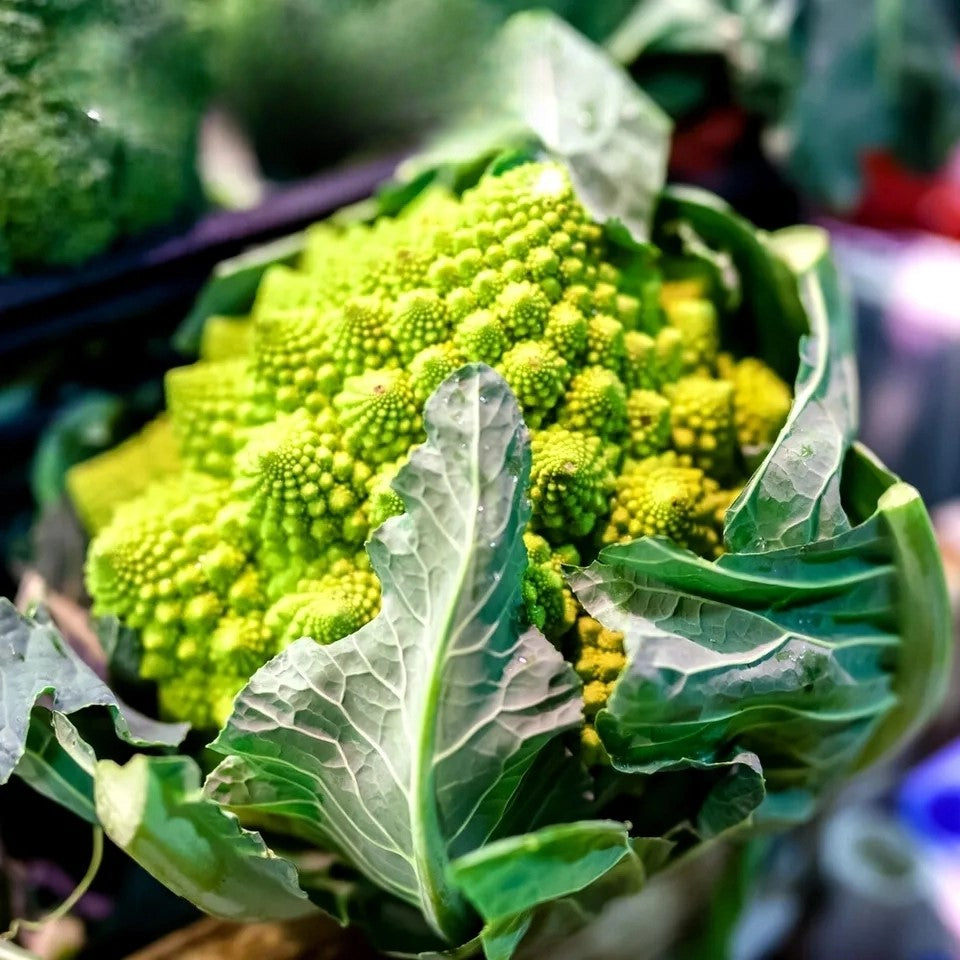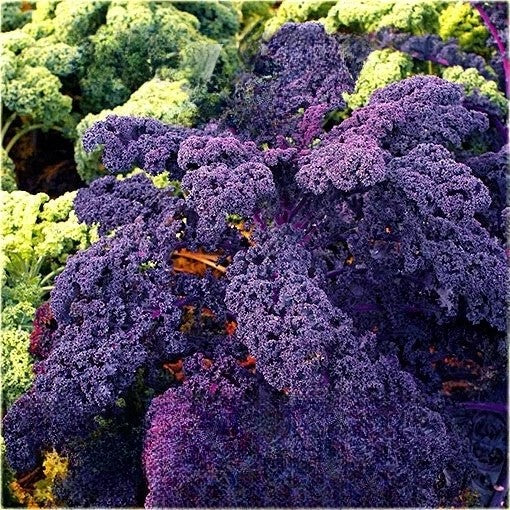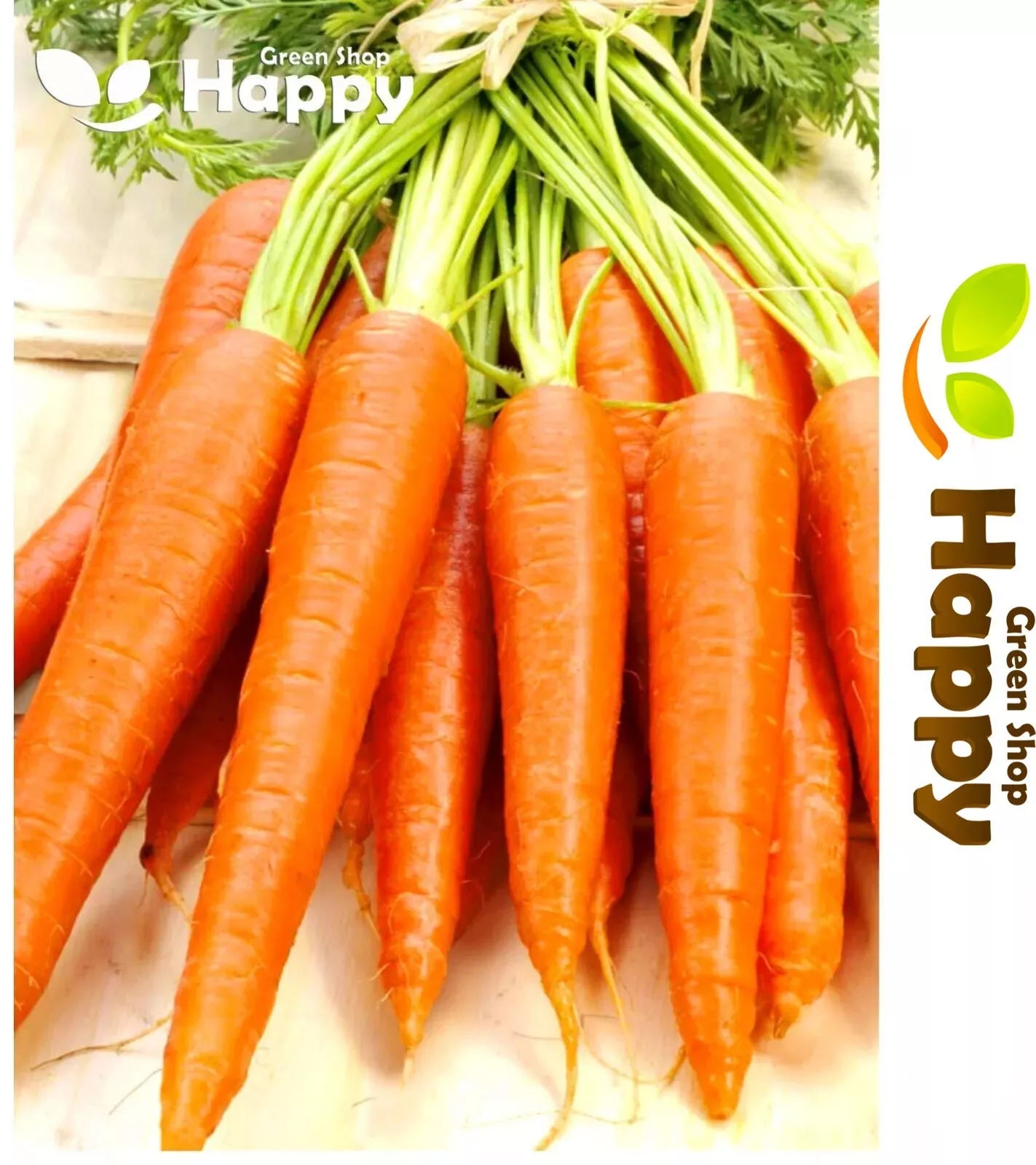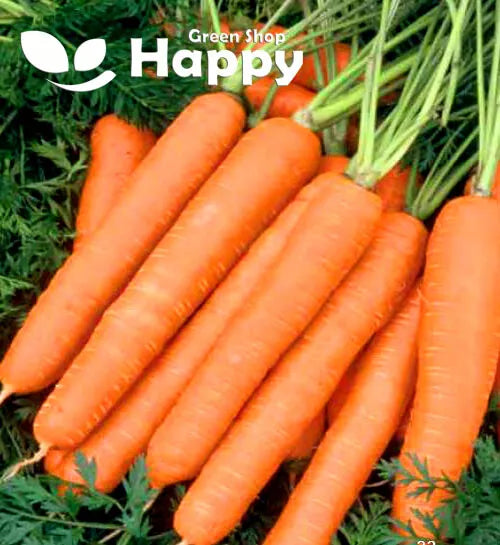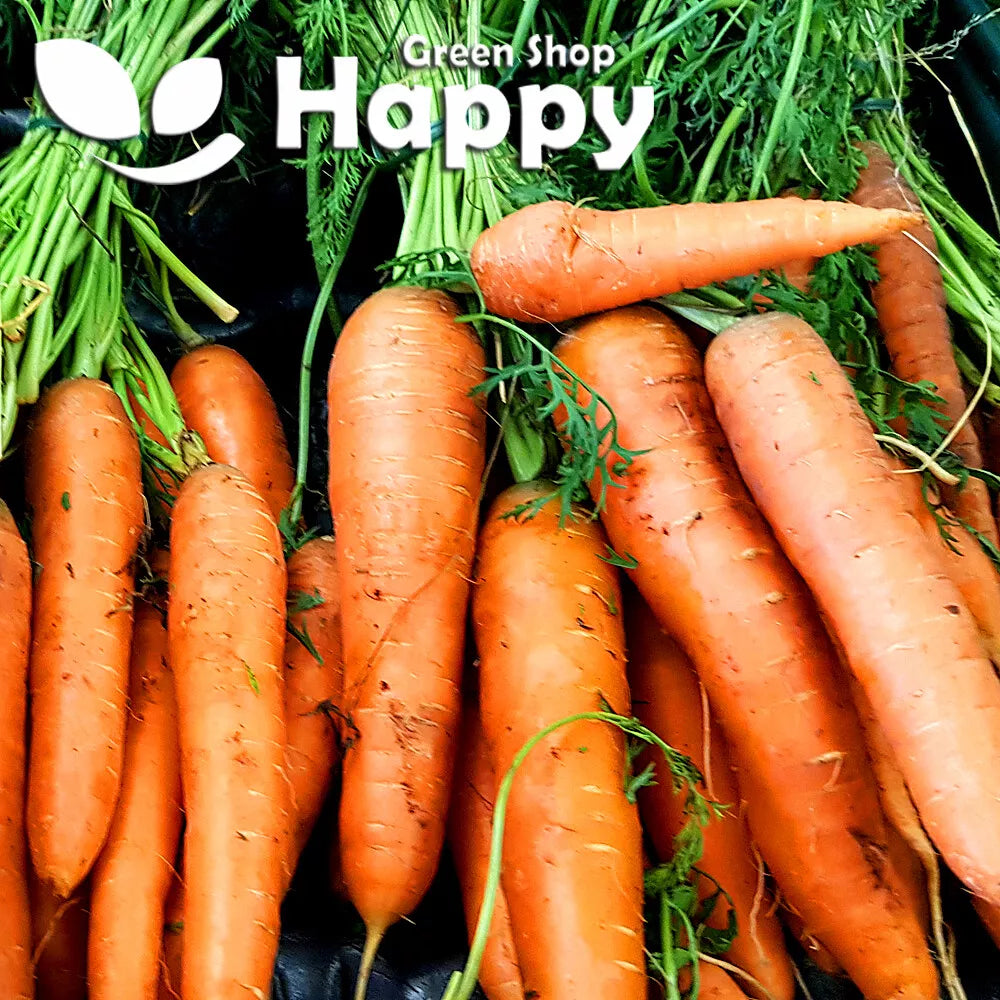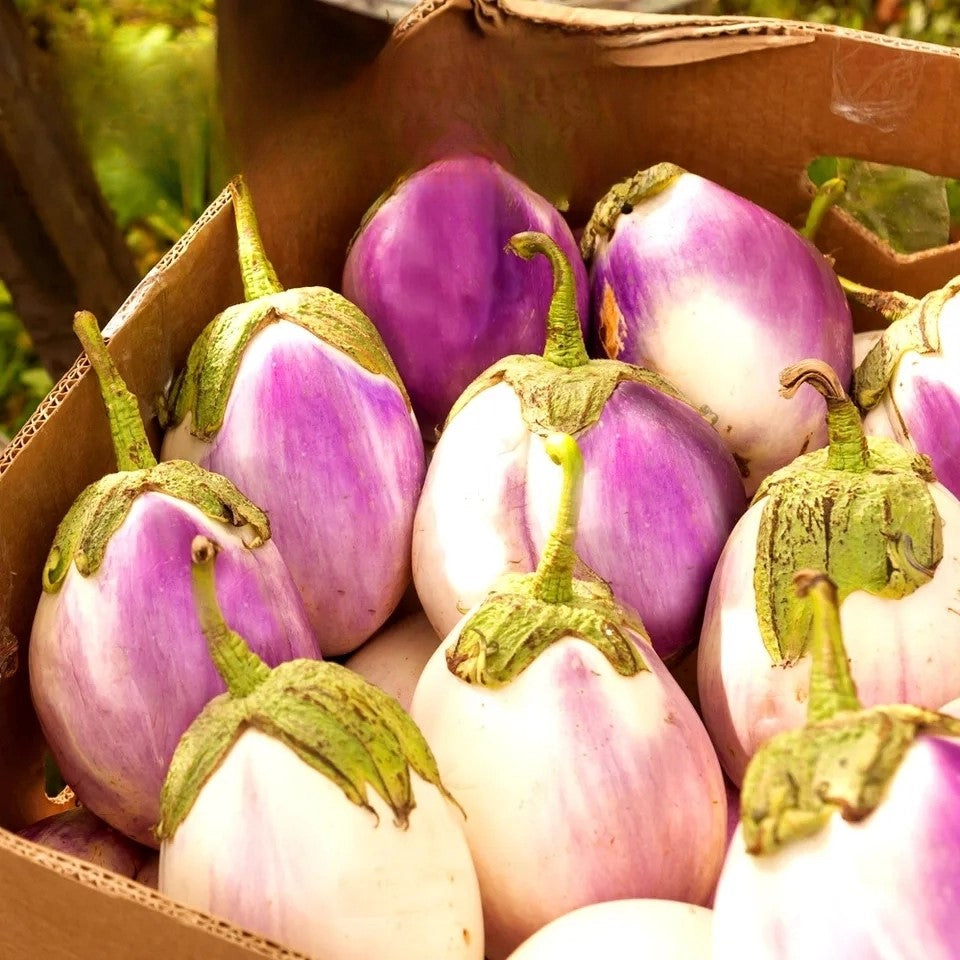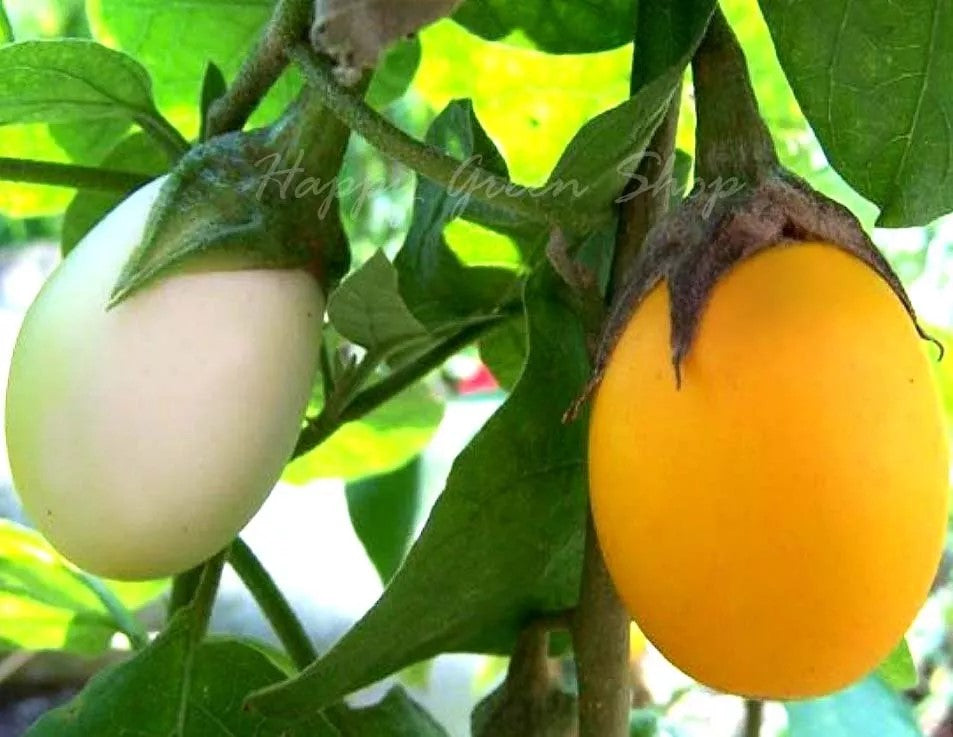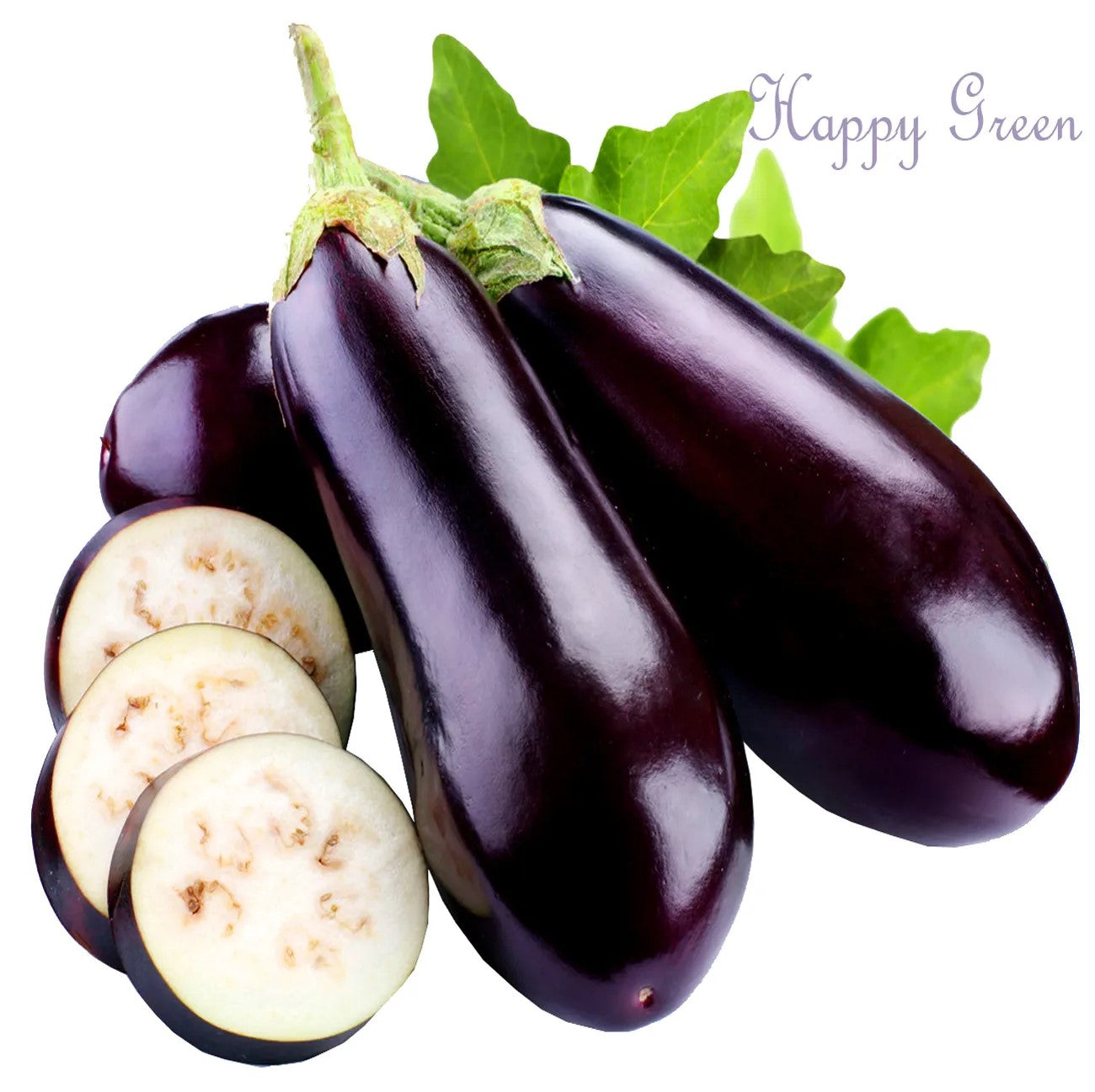Sort by:
27 products
27 products
Cauliflower 'Romanesco Natalino' – Seeds (Brassica oleracea)
Cauliflower ‘Romanesco Natalino’ is an extraordinary Italian heirloom, admired for its striking spiral, lime-green heads with a unique fractal pattern. More than just a showpiece, this variety is nutritious, delicious, and versatile – offering a slightly nutty, delicate flavor that works well roasted, steamed, or enjoyed raw in salads. Highly ornamental yet productive, it’s a standout addition to any vegetable garden.
How to Grow
-
Sow indoors: February – May in seed trays or pots.
-
Sow outdoors: May – June, directly into well-prepared soil.
-
Transplant: Harden off young plants and set them 60 cm apart in fertile ground.
-
Position: Full sun, rich, firm soil with good drainage.
-
Care: Keep soil consistently moist and protect young plants from pests.
Key Features
-
Stunning lime-green spiral florets
-
Mild, nutty flavor – more delicate than standard cauliflower
-
Traditional Italian variety
-
Attractive and productive crop
Ideal For
-
Kitchen gardens and allotments
-
Chefs and home cooks looking for something unique
-
Roasting, steaming, or eating raw
-
Eye-catching centerpiece in vegetable beds
Sowing & Harvest
-
Sow: February – June
-
Harvest: September – November
Quick Tip
For the best curds, ensure consistent watering and feed with a high-potassium fertiliser as heads develop.
Kale 'Scarlet' – Seeds (Brassica oleracea)
The Kale 'Scarlet' is a stunning ornamental and culinary variety, prized for its deeply curled, frilly leaves that turn a rich purple-red as temperatures drop. This hardy kale is packed with vitamins and minerals, offering a sweet, mild flavor that improves after the first frosts.
Beautiful in the garden and nutritious in the kitchen, it’s perfect for salads, smoothies, sautés, and winter soups.
How to Grow
-
Sow indoors: March – May
-
Sow outdoors: April – June
-
Transplant/Thin: 40–50 cm apart
-
Soil: Fertile, well-drained, moisture-retentive
-
Position: Full sun or partial shade
-
Care: Water regularly and protect young plants from pests
Key Features
-
Striking deep-red, frilly leaves
-
Sweet flavor enhanced by frost
-
Very hardy, withstands winter cold
-
Rich in vitamins A, C, and K
-
Dual-purpose: ornamental and edible
Sowing & Harvest
-
Sow: March – June
-
Harvest: October – March
Carrot 'Amsterdam 3' Seeds (Daucus carota)
Enjoy early, tender carrots with Carrot 'Amsterdam 3', a reliable variety that produces smooth, cylindrical roots with a fine texture and sweet flavor. These fast-growing carrots are perfect for fresh eating, juicing, or cooking and are especially suited for early sowings and smaller gardens. A rewarding crop for gardeners who love crisp, flavorful vegetables.
How to Grow
-
Sow seeds outdoors from early spring to midsummer.
-
Choose light, well-drained soil free of stones.
-
Sow thinly 0.5–1 cm deep in rows 20–25 cm apart.
-
Thin seedlings to 5–8 cm apart for full root development.
-
Harvest young for baby carrots or let mature for full-size roots.
Key Features
-
Smooth, cylindrical roots with bright orange color
-
Sweet, tender flavor and fine texture
-
Fast-growing and early maturing
-
Ideal for baby carrots, fresh eating, or juicing
-
Reliable yields in small or large gardens
Ideal For
-
Fresh snacks and healthy lunches
-
Juicing and cooking
-
Early crops for home gardens
-
Gardeners with limited space
Sowing
-
Best time: Early spring through midsummer
-
Depth: 0.5–1 cm
-
Spacing: Thin to 5–8 cm, rows 20–25 cm apart
-
Prefers loose, stone-free soil in full sun
Quick Tip
-
Keep soil evenly moist during germination to ensure strong, uniform seedlings.
Carrot ‘Naomi’ Nantes Type Seeds (Daucus carota)
Enjoy sweet, tender carrots with Carrot ‘Naomi’ (Daucus carota), a classic Nantes type. This reliable variety produces uniform, cylindrical roots with smooth skin and excellent flavor, perfect for fresh eating, juicing, or cooking. Early-maturing and easy to grow, it’s an ideal choice for home gardens, raised beds, and allotments.
How to Grow
-
Sow seeds directly outdoors from early spring to midsummer.
-
Use fertile, stone-free, well-drained soil in full sun.
-
Sow seeds 1 cm deep in rows, spacing seedlings 5–8 cm apart.
-
Keep soil consistently moist for even germination (10–14 days).
-
Harvest roots when they reach 15–18 cm in length for best flavor and texture.
Key Features
-
Classic Nantes type with smooth, cylindrical roots
-
Sweet flavor and tender texture
-
Early-maturing and uniform growth
-
Excellent for fresh eating, juicing, and cooking
-
Reliable and easy to grow in most soils
Ideal For
-
Vegetable gardens, raised beds, and allotments
-
Fresh eating, juicing, cooking, and freezing
-
Continuous harvests with succession sowing
-
Gardeners of all levels
Sowing
-
Best time: Early spring to midsummer outdoors
-
Depth: 1 cm
-
Spacing: Thin to 5–8 cm apart
-
Prefers full sun and fertile, well-drained soil
Quick Tip
-
Sow in succession every 3 weeks to enjoy a continuous supply of sweet, tender carrots.
Chantenay Carrot ‘Charisma’ F1 Seeds (Daucus carota)
Grow high-yield, flavorful carrots with Chantenay Carrot ‘Charisma’ F1 (Daucus carota). This uniform, early-maturing variety produces thick, short, orange roots with excellent taste, ideal for fresh salads, cooking, and roasting. Hardy and easy to grow, it’s perfect for kitchen gardens, raised beds, and succession sowing.
How to Grow
-
Sow seeds directly outdoors from early spring to midsummer.
-
Use fertile, well-drained soil in full sun.
-
Sow seeds 1 cm deep and thin seedlings to 5–8 cm apart.
-
Keep soil consistently moist for optimal germination (10–14 days).
-
Harvest roots when fully grown but still tender for best flavor.
Key Features
-
Thick, short, uniform orange roots
-
Early-maturing, high-yield F1 hybrid
-
Sweet and flavorful, perfect for salads, cooking, or roasting
-
Reliable and easy to grow
-
Suitable for succession sowing and continuous harvest
Ideal For
-
Vegetable gardens, raised beds, and allotments
-
Fresh salads, cooking, and roasting
-
Succession sowing for steady harvests
-
Homegrown culinary use
Sowing
-
Best time: Early spring to midsummer outdoors
-
Depth: 1 cm
-
Spacing: Thin to 5–8 cm apart
-
Prefers full sun and fertile, well-drained soil
Quick Tip
-
Sow in successive batches every 2–3 weeks to enjoy a continuous supply of tender, sweet roots.
Carrot ‘Chantenay’ – Seeds
(Daucus carota)
Carrot ‘Chantenay’ is a classic, reliable variety producing short, broad, conical roots with a rich orange color and sweet, crisp flavor. Ideal for heavy or shallow soils, this variety performs well where longer carrots might struggle. Perfect for fresh eating, juicing, or roasting, ‘Chantenay’ carrots are a trusted favorite for gardeners and cooks alike.
Key Features
-
Type: Maincrop carrot
-
Root Shape: Short, conical
-
Color: Deep orange
-
Flavor: Sweet, tender, and full-bodied
-
Days to Maturity: 70–85 days
-
Soil Tolerance: Performs well in heavier or shallow soils
Ideal For
-
Kitchen gardens and allotments
-
Containers and raised beds
-
Fresh use, cooking, and juicing
Sowing & Growing
-
Sow outdoors: March – July
-
Harvest: June – October
-
Spacing: Thin to 5–8 cm apart
-
Depth: 1 cm
-
Position: Full sun
-
Soil: Loose, well-drained, stone-free
Care Tips
-
Keep soil moist for even germination.
-
Thin seedlings early to avoid crowding.
-
Avoid fresh manure to prevent root forking.
Aubergine 'Rotonda Bianca Sfumata di Rosa' – Seeds (Solanum melongena)
A true Italian heirloom, ‘Rotonda Bianca Sfumata di Rosa’ is one of the most striking and delicious aubergines you can grow. Its fruits are round, creamy-white with beautiful pink to violet shading, making them as decorative as they are tasty. The flesh is tender, mild, and sweet, never bitter, and perfect for grilling, roasting, or adding to Mediterranean dishes. Productive plants produce a generous harvest throughout summer.
How to Grow
-
Sow indoors: January – April, in pots or seed trays, 0.5 cm deep.
-
Germination: 18–25°C; aubergines need steady warmth to sprout.
-
Transplant: Pot on seedlings and harden off before planting outdoors after frost.
-
Spacing: 50–60 cm apart.
-
Position: Full sun, sheltered and warm spot (greenhouse or polytunnel recommended in cooler climates).
Key Features
-
Traditional Italian heirloom aubergine
-
Decorative, round fruits with pink-violet blush
-
Tender flesh with mild, sweet flavor
-
Prolific, long harvest period
-
Ideal for grilling, baking, or Mediterranean cooking
Ideal For
-
Mediterranean cuisine (Parmigiana, Ratatouille, Grilled Aubergine)
-
Greenhouses, polytunnels, or sunny gardens
-
Gardeners seeking unique, colourful crops
Sowing & Harvest
-
Sow: January – April
-
Harvest: July – September
Quick Tip
For best results, pinch out the growing tip once the plant has 5–6 fruits developing. This helps focus energy on ripening for a bigger, tastier harvest.
Aubergine 'Golden Egg' – Seeds (Solanum melongena)
Add a touch of the unusual to your garden with the striking Golden Egg aubergine. This rare and decorative variety produces small, oval fruits that ripen to a stunning golden yellow. Compact and easy to grow, it’s both ornamental and edible, making it a real talking point in any kitchen garden, greenhouse, or patio pot. The tender fruits are perfect for grilling, baking, or adding a unique twist to your favorite dishes.
How to Grow
-
Sow seeds indoors from January to April at 20–25°C.
-
Sow 0.5 cm deep in trays or pots of moist compost.
-
Transplant seedlings into larger pots when strong enough.
-
Harden off and plant into greenhouse borders, grow bags, or sunny sheltered beds after the last frost.
-
Water regularly and support as fruits develop.
Key Features
-
Rare aubergine variety with golden-yellow fruits
-
Compact plants, ideal for pots and greenhouses
-
Edible and ornamental – perfect for display and cooking
-
Easy to grow with good yields
-
Unique centerpiece for kitchen gardens
Ideal For
-
Greenhouses, polytunnels, and sunny patios
-
Decorative planting with edible appeal
-
Grilling, baking, and creative cooking
-
Gardeners looking for something unusual
Sowing & Harvest
-
Sow: January to April (indoors)
-
Depth: 0.5 cm
-
Spacing: 40–50 cm
-
Harvest: August to October
Quick Tip
-
For best results, pick fruits regularly when firm and brightly colored to encourage continuous production.
Aubergine 'Black Beauty' – Seeds (Solanum melongena)
The classic Black Beauty aubergine is a time-honored variety producing large, glossy, deep-purple fruits with tender flesh and rich flavor. Compact and reliable, it’s a favorite for home gardeners and a staple in Mediterranean cuisine. Perfect for grilling, roasting, baking, or adding to curries and stews, this aubergine is as versatile as it is delicious.
How to Grow
-
Sow seeds indoors from January to April in trays or pots.
-
Sow 0.5 cm deep in moist compost, keeping warm at 20–25°C.
-
Transplant seedlings into larger pots when big enough to handle.
-
Harden off and plant out in a greenhouse or sunny, sheltered spot once frosts have passed.
-
Support plants as they grow and keep soil moist.
Key Features
-
Classic heirloom aubergine variety
-
Large, glossy, deep-purple fruits
-
Rich, tender flesh with excellent flavor
-
Reliable and high-yielding
-
Suitable for greenhouses, polytunnels, or warm outdoor sites
Ideal For
-
Mediterranean cooking
-
Roasting, grilling, frying, and stews
-
Greenhouses, polytunnels, or sunny patios
-
Home gardeners seeking a proven classic
Sowing & Harvest
-
Sow: January to April (indoors)
-
Depth: 0.5 cm
-
Transplant spacing: 40–50 cm
-
Harvest: August to October
Quick Tip
-
Pinch out the growing tip when the plant reaches about 30 cm to encourage bushier growth and more fruit.
Showing 18/27

